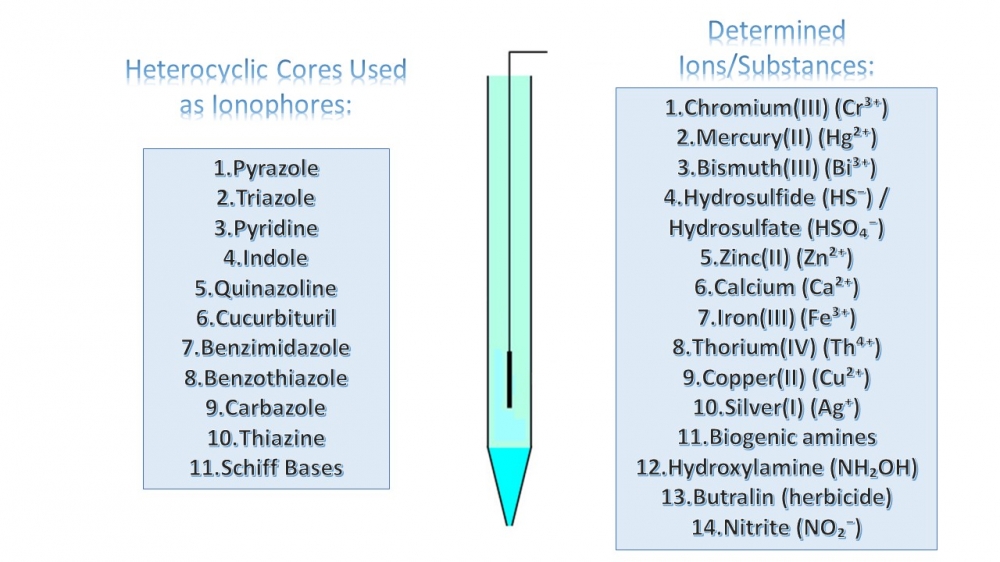JOURNAL 3444
Organic Communications
Year: 2025 Issue: 1 January-March
p.3 - 16
Viewed 1283 times.
GRAPHICAL ABSTRACT

ABSTRACT
This review article provides a comprehensive analysis of the advancements in organic heterocyclic compounds as ionophores for potentiometric sensors over the past decade. It highlights their critical role in modern analytical chemistry and their impact on sensor performance. Various classes of heterocyclic ionophores—including five-membered monoheterocyclic compounds (e.g., pyrazole and 1,2,4-triazole derivatives), pyridine derivatives, condensed heterocyclic compounds (such as indoles, quinazolines, cucurbiturils, benzimidazoles, benzothiazoles, carbazoles, and thiazines), Schiff bases, and macroheterocyclic compounds—are systematically reviewed. Special emphasis is placed on the design, synthesis, and optimization of these ionophores within polymer-based and PVC membrane electrodes, along with their key performance parameters such as linear concentration ranges, detection limits, response times, and ion selectivity. By analyzing research findings from the last 10 years, this review underscores the advantages of organic heterocyclic ionophores in terms of selectivity, stability, and versatility, making them highly suitable for applications in environmental monitoring, clinical diagnostics, food safety, and industrial analysis. Additionally, emerging trends and ongoing challenges in potentiometric sensor development are discussed, offering insights into future research directions in this rapidly evolving field.
KEYWORDS- Ionophores
- potentiometric sensors
- ion-selective electrodes
- PVC membrane electrodes
- sensor selectivity
- macroheterocyclic compounds